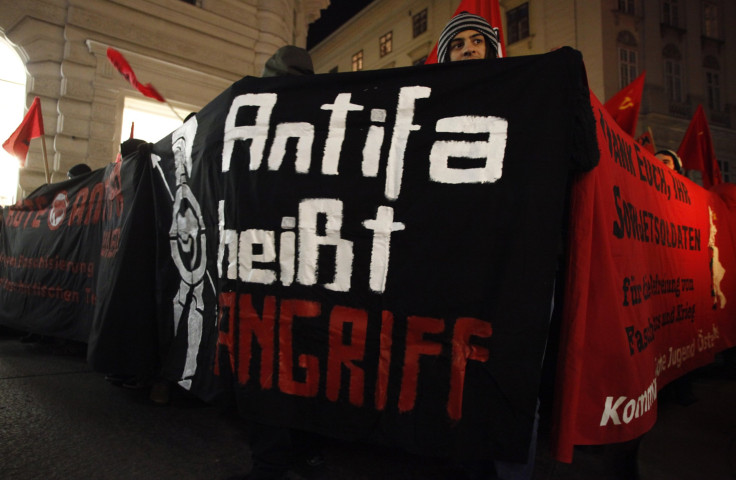What Is Antifa? Anti-Fascist Movement Clashes With Alt-Right
In recent months there’s been a rise of news stories that start something like this: Black-clad “antifa” members clashed with members of an alt-right free speech rally in some city in some state. But what is antifa?
Antifa is short for anti-fascist. It’s a loose collection of people looking to resist or tamp down people they view as fascists. The group doesn’t have a central ideology – their view of who are fascists range from President Donald Trump and his supporters to a narrower view, which includes just fringe parts of the alt-right that subscribe to bigoted or neo-nazi ideologies. The movement’s current iteration can be traced to parts of the Occupy Movement and anti-globalist protests in the early 2000s. The idea in general is rooted in mid- 20th century local European resistance to fascist regimes like that of Benito Mussolini in Italy.
READ: Princeton Professor Receives 'Alt-Right' Death Threats Following Trump Criticism, She Says
One piece of the antifa movement is countering fascism with violence or the threat of violence, hence the clashes that happen with members of the alt-right. The movement is also anti-racist according to several different online chapters of the movement including Antifa International. Members of antifa typically wear all black, calling themselves the black bloc, and wear masks.

The New York Times writer Farah Stockman describes antifa this way:
“Little known to practitioners of mainstream American politics, militant anti-fascists make up a secretive culture closely associated with anarchists. Both reject social hierarchies as undemocratic and eschew the political parties as hopelessly corrupt, according to interviews with a dozen anarchists around the country. While some anarchists espouse nonviolence, others view property damage and even physical attacks on the far right as important tactics.”
Antifa was described this way in left-leaning magazine The Nation:
“Antifa doesn’t only delineate that which opposes fascism. It is a set of tactics and practices that have developed since the early 20th century (and the rise of fascism in Italy) as a confrontational response to fascist groups, rooted in militant left-wing and anarchist politics.”
Right-leaning magazine, the National Review described the movement this way:
“Under the aegis of “anti-fascism,” leftist thugs have appointed themselves adjudicators of the fates of Richard Spencer, Heather MacDonald, the limo owner or Trump voter — anyone they 'don’t like' — and in this lawless realm, whatever crimes Antifa commit are not crimes, and their victims are not victims … the Antifa ideology can produce only enemies.”
READ: Pepe The Frog Meme Ban: Apple Rejects App Featuring Alt-Right Character From The App Store
Richard Spencer is a white supremacist who was punched by an antifa member while doing a television interview near the Trump inauguration. Heather MacDonald is a pro-police author whose appearance at Claremont McKenna College was disrupted by protesters in April.
Antifa protests reached national news most prominently in several instances in Berkley, California this year. On April 15, Antifa activists clashed with Trump supporters and members of much more far-right groups, including white nationalists. Antifa also showed up at protests in Berkeley that prevented right-wing provocateur Milo Yiannopoulos from giving a planned talk at the University of California, Berkeley. Right-wing pundit Ann Coulter was also prevented from speaking at the college due to threats of violence.
© Copyright IBTimes 2025. All rights reserved.





















